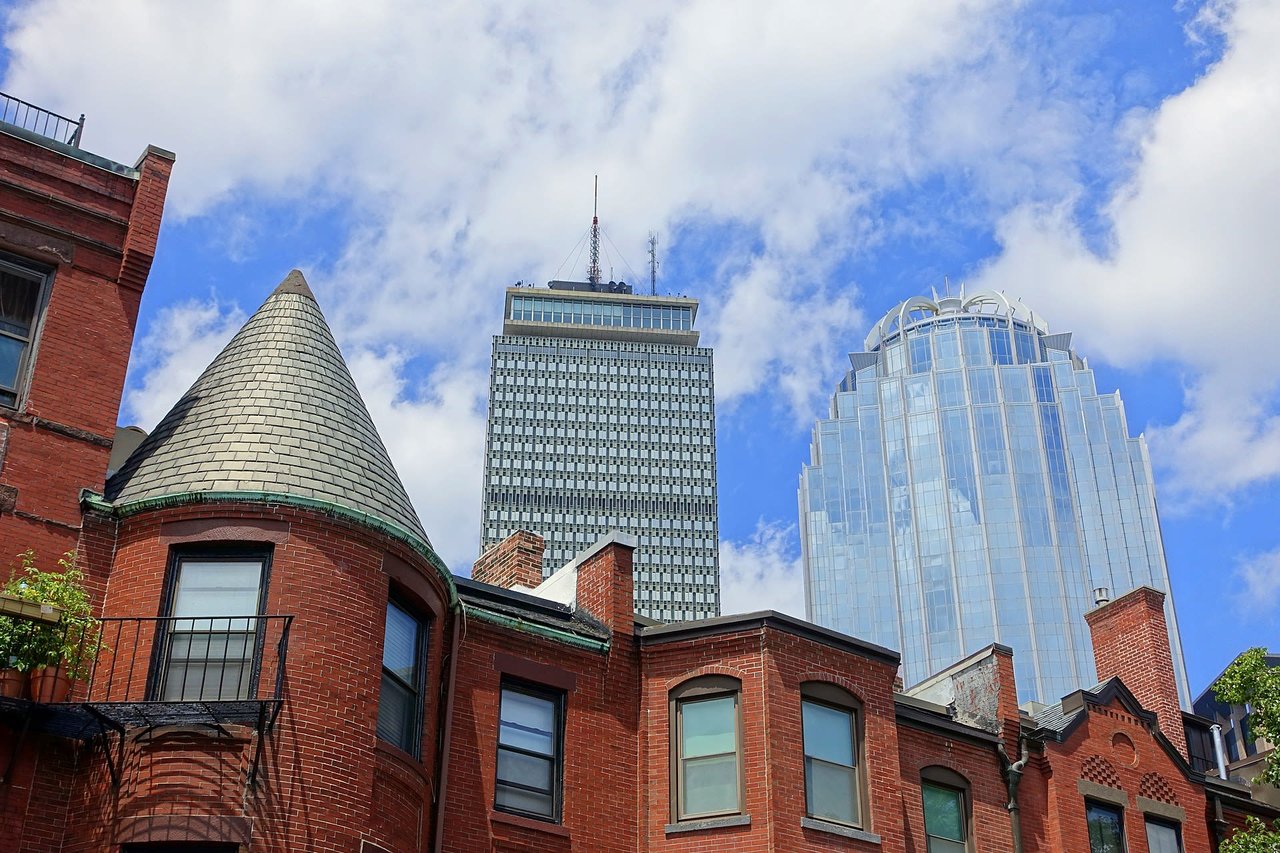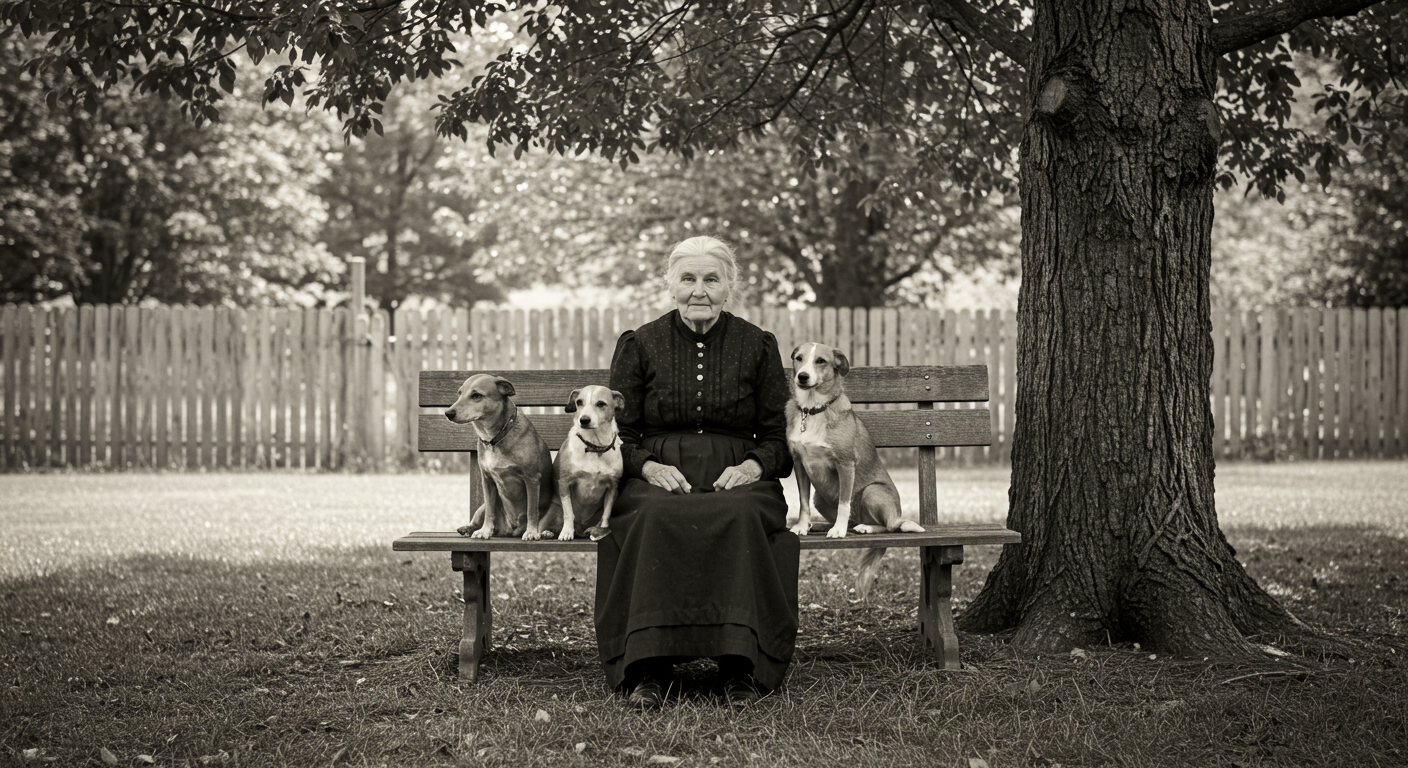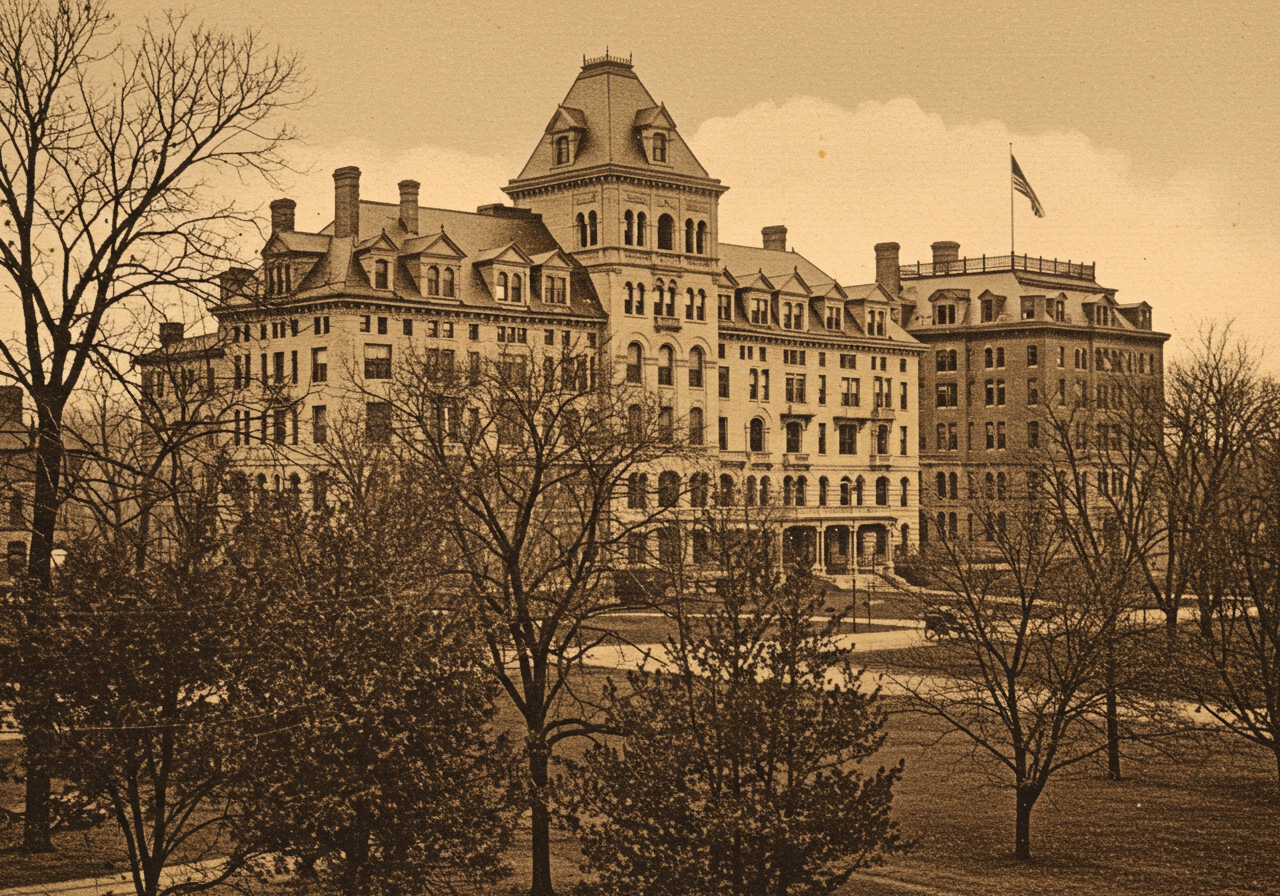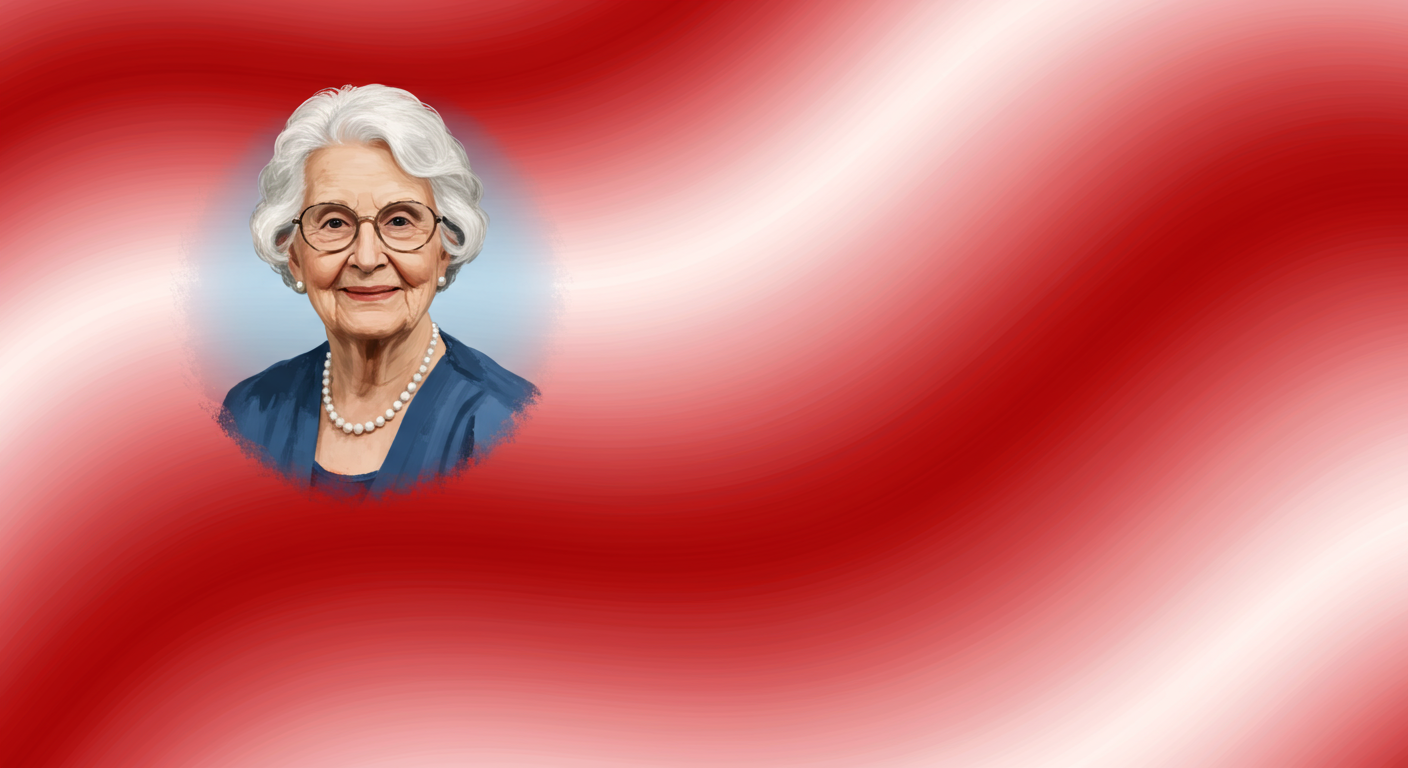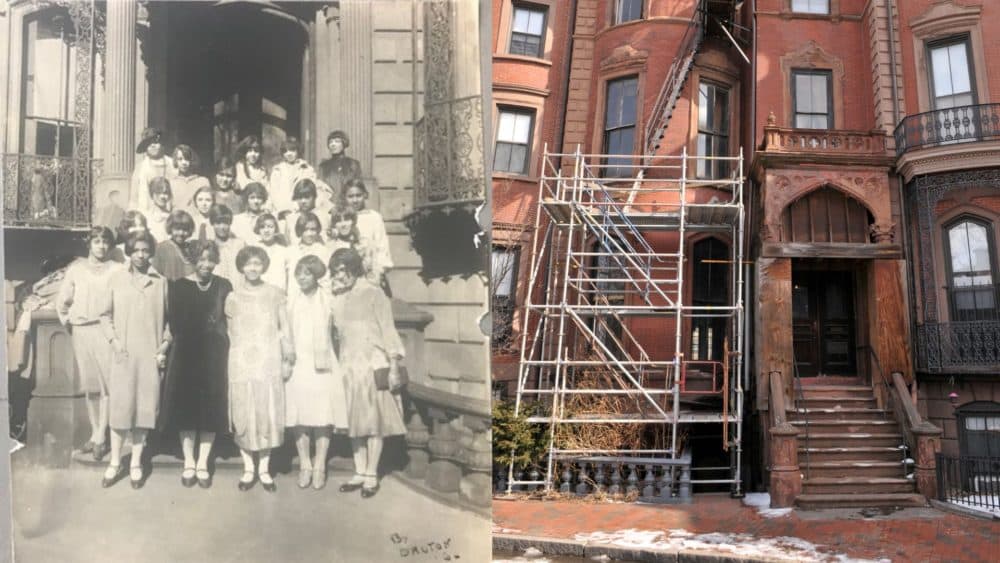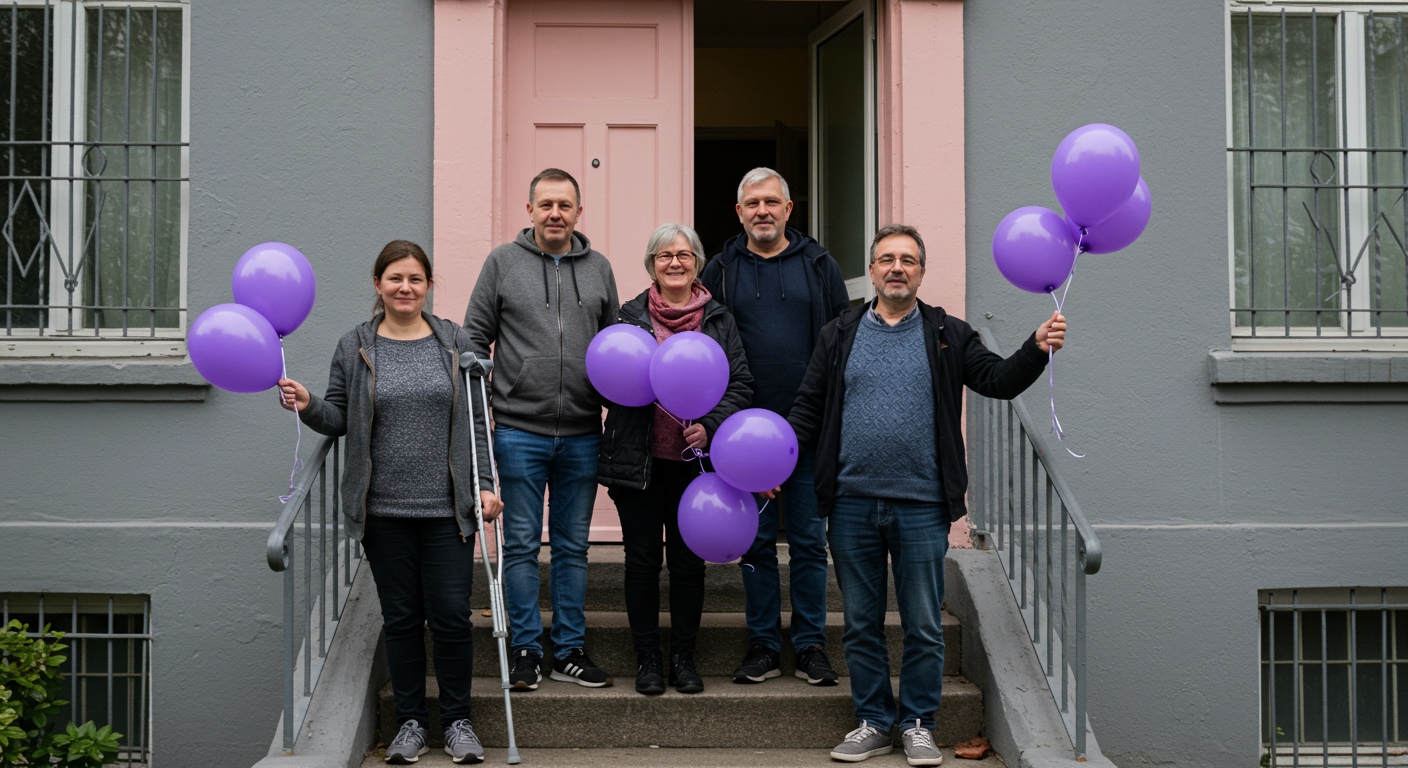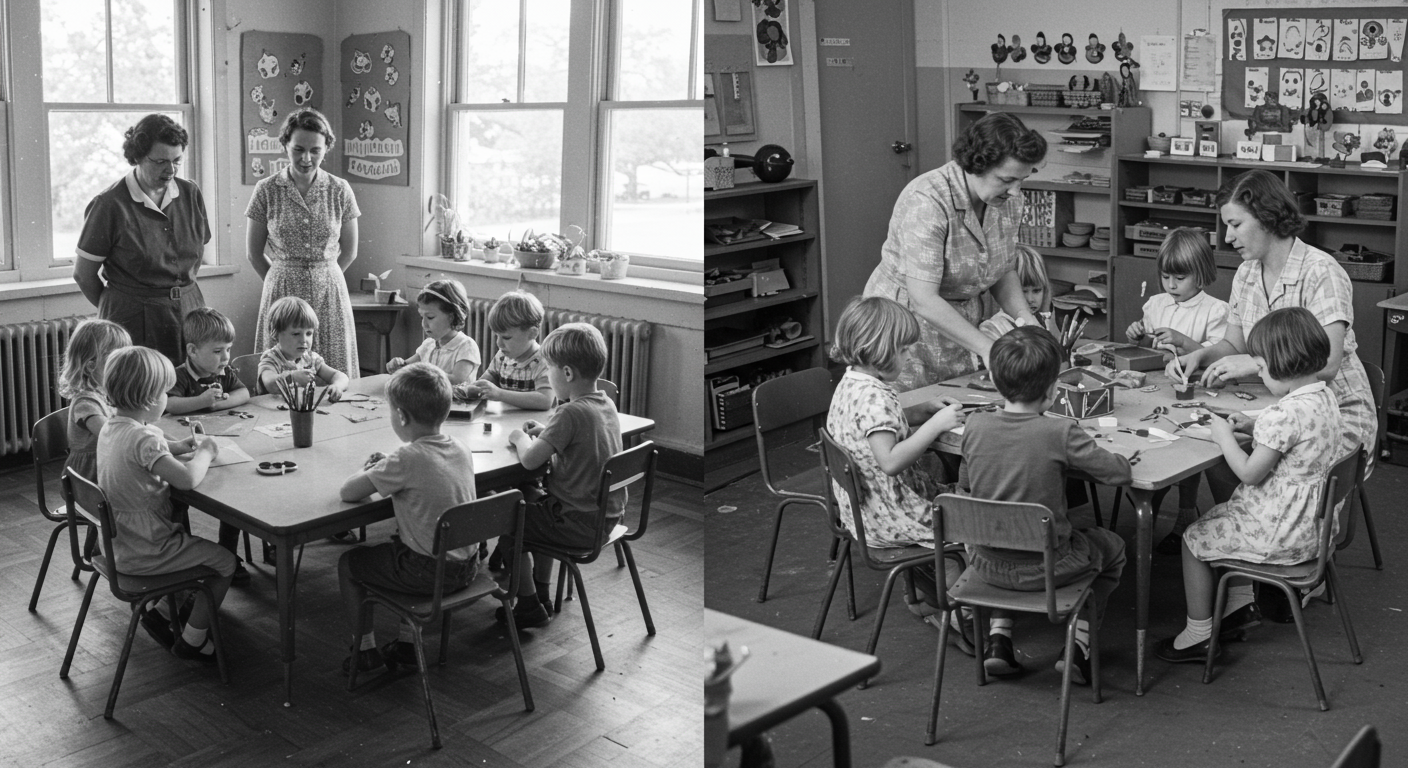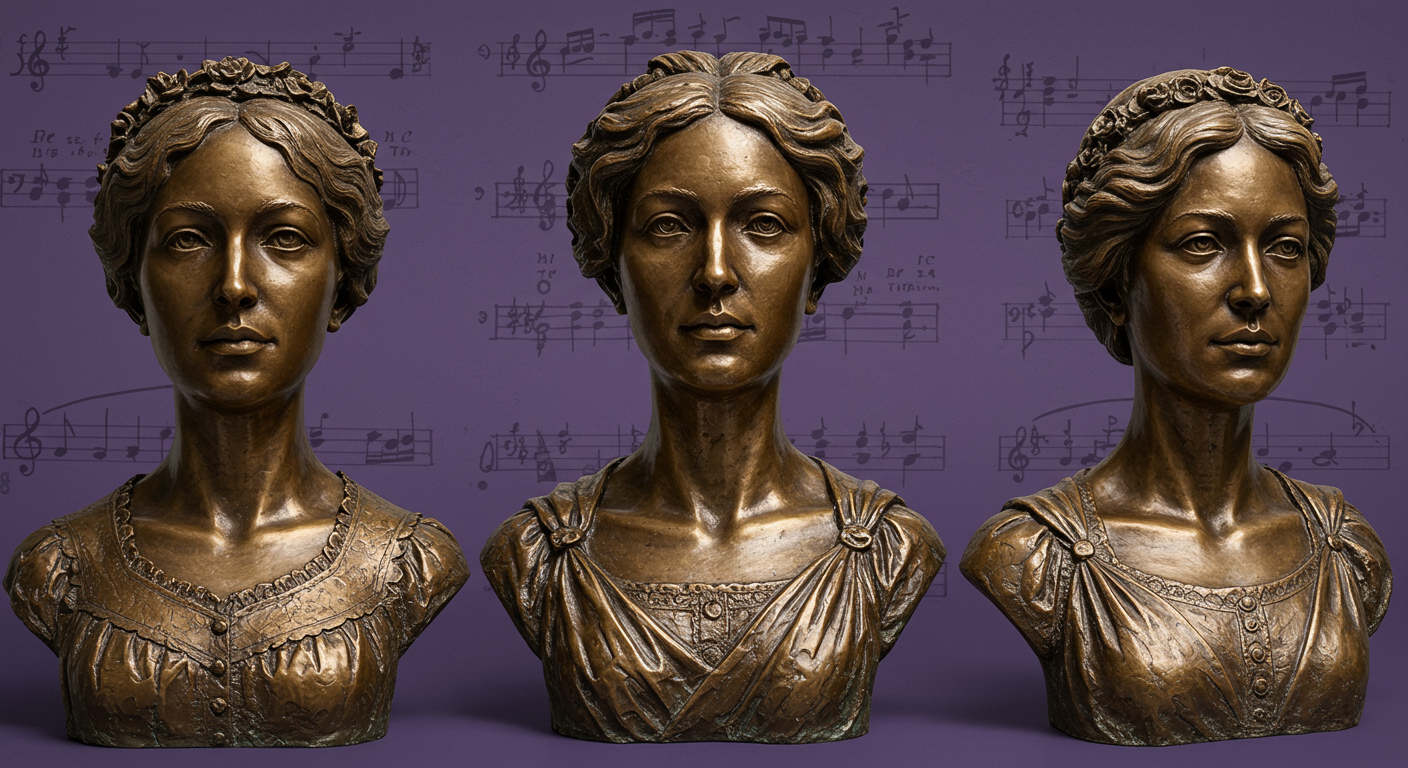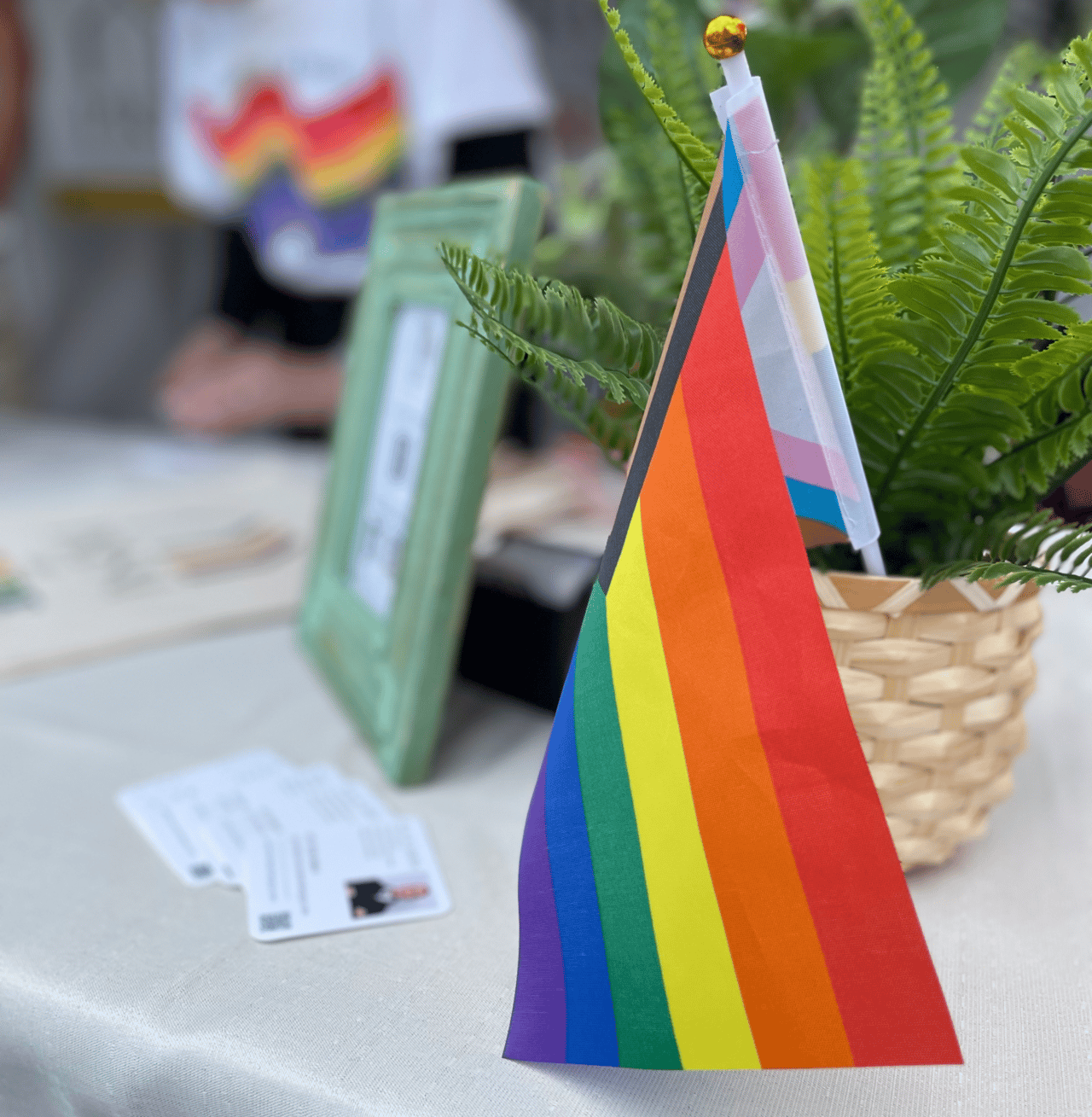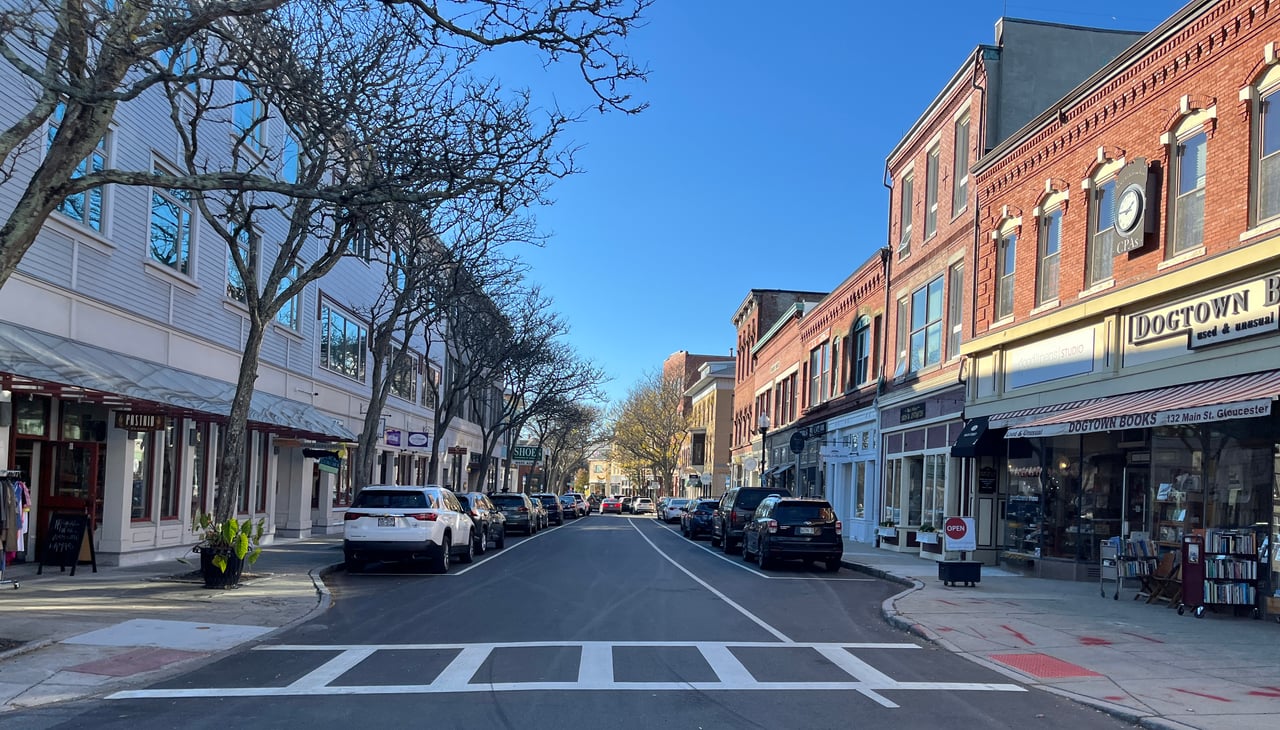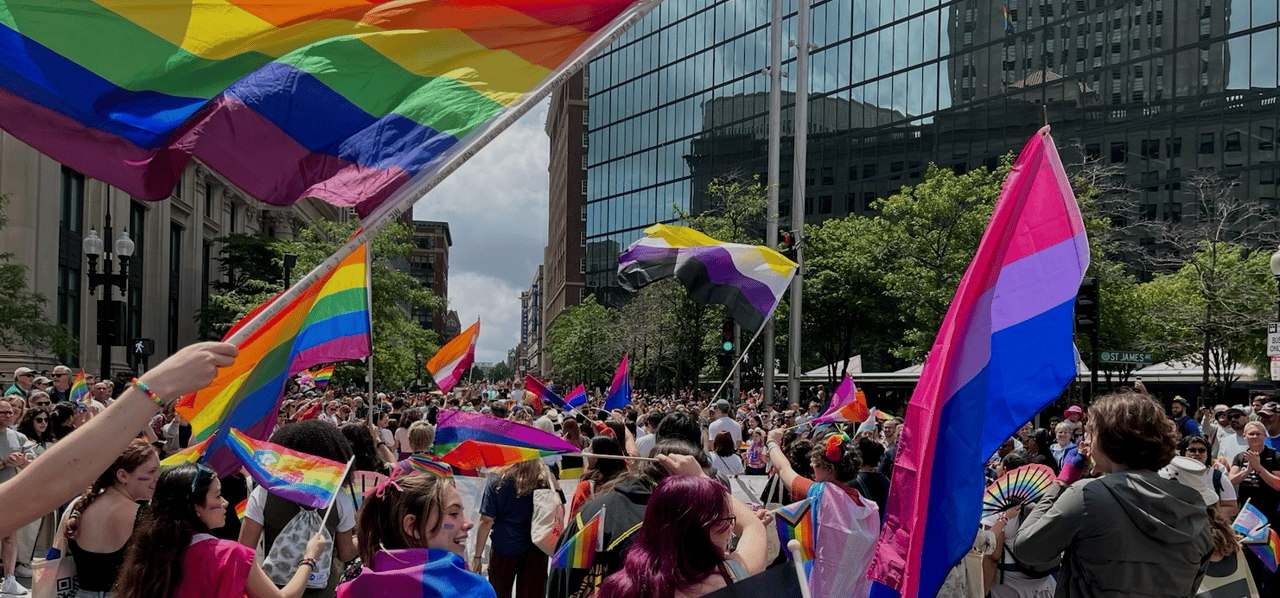Historic District: South End
The South End is dense with history, from social welfare to the arts. Many of the figures who are now legacies of the South End are women, often the unsung heroes. We've only covered a fraction of their history here, but provide plenty of links if you'd like to dive deeper. Prism Real Estate Group is proud to be involved in the South End community, supporting families in their decisions to either let go of or become part of the communities in the historic buildings of Boston's South End. This neighborhood is protected by organizations such as The South End Landmark District Commission and South End Historical Society, whose efforts maintain its history and architecture.
Harriet Tubman Park
Harriet Tubman, the famous abolitionist, Underground Railroad conductor, spy, nurse, warrior and women's rights crusader. From the moment she escaped the South, she risked her own life repeatedly to help others and fight for humanitarian causes. She was widely admired during her life, was befriended by many powerful politicians and abolitionists, including William Henry Seward, Secretary of State under Lincoln, John Andrew, Governor of Massachusetts, and numerous civil rights activists, including Lucretia Mott, Susan B. Anthony, Martha Coffin Wright, Frances Ellen Watkins Harper, Ednah Dow Cheney, Caroline Dall, Frederick Douglass, Lewis Hayden, John Rock, William Wells Brown, William Lloyd Garrison, Franklin Sanborn, Wendell Phillips and others. She forged close ties to Boston and its many activists and was an essential contributor to and beneficiary of the central role that Boston and Massachusetts played in advancing the abolitionist and women's rights causes. Although Tubman never lived in Boston, she had links to the city through her network of abolitionist friends, one of whom opened the Harriet Tubman House as a settlement house for black women who had migrated from the South. The house has since relocated, but it still exists today as part of the United South End Settlements program. [i]
The Denison House
Denison House was founded in 1892 on Tyler Street. It was originally known as the Boston College Settlement, and was supported by women from Boston College. The women named the house for Edward Denison, an Englishman who lived and worked in London’s East End. Denison was a fore-runner of the Settlement Movement. The House was frequented by many figures who made their mark on history, and one who made her mark in the sky, Amelia Earhart. Earhart was not only a pilot, but also a social worker. In 1925, Earhart was hired as a social worker at the Denison House. [i] This neighborhood has always been home to people dedicated to helping others and creating change. To this day, the majority of occupations of South End residents is in healthcare and social work.
Amelia Earhart returns to Dennison House on Tyler Street where she is greeted by children of all nationalities. Photo: Leslie Jones
The Animal Rescue League
Celebrating 125 years of commitment to being champions of animal welfare since 1899, ARL has responded to the needs of animals and has sought to foster a more humane community for both animals and people. The mission, vision, and plans outlined here grow out of and remain true to this rich history. It is our hope that this new framework will guide ARL to achieve even greater impact for animals in need well into the year 2029 and beyond. [i]
Anna Harris Smith, founder of the Animal Rescue League of Boston. She took action after seeing the cruel mistreatment of Boston’s working horses and the hordes of stray and homeless animals living on the streets. “While getting dogs and cats off the street is work worth doing, the teaching of thoughtful kindness is the work that changes families, communities, and a nation.” -excerpt from her editorial in the Boston Evening Transcript.
Franklin Square House
It was “the largest hotel for young working women and girl students in the world,” claimed The New York Times in 1913. Located at 11 East Newton Street in Boston’s South End, the Franklin Square House was an affordable home for single women until the late 1900s. When George Perin founded the Franklin Square House in 1902, his vision was “to provide a home for working girls at moderate cost.” The Franklin Square House met this need with low rents and progressive features, including in-house health care, evening classes, dining services, a library, entertainment halls, sports teams, and an advisory council of residents.
The voting registers are full of the stories of clerks, nurses, students, teachers, dental hygienists, activists, hairdressers, and bookkeepers who all called the Franklin Square House home. Many more stories of women across Boston await discovery in the transcribed voter registrations of the Mary Eliza Project. Mary Eliza Mahoney was the first African-American to study and work as a professionally trained nurse in the United States. In 1879, Mahoney was the first African American to graduate from an American school of nursing. In 1970, the building was sold to the City of Boston and eventually became the Franklin Square Apartments. Today, the legacy of Perin’s community of Boston working women is the Franklin Square House Foundation, which provides grants for affordable housing services for women and families. [i]
Postcard of the Franklin Square House on the corner of Washington and East Newton Street, circa 1921.
Johnson Manufacturing Company
in 1899, the building was rented to Madame Mary L. Johnson, a wig maker, scientific scalp specialist, and hair culturist. Mary Johnson and her husband, Dr. W. Alexander Johnson, were Black and ran one of just 200 Black-owned businesses in the city of Boston by the beginning of the 20th century. At their storefront, they sold hair goods at Johnson’s Hair Store. Sold all over the United States since 1900, their famous “Johnson Hair Food” was “the most scientific pomade yet discovered for growing, beautifying and softening the hair,” they advertised. In connection with their hair product outfit, Madame Johnson operated Johnson’s School of Beauty Culture, where a variety of services including manicuring, shampooing, scalp massage, facial massage, hairdressing, and scalp treatment were offered. The school provided young Black women in Boston technical training and skills, which there were limited options at the time. Mr. Johnson also was President of the Boston Negro Business League, which helped bolster Black businesses at the turn of the century.
Women's Service Club of Boston
What appears as an ordinary building has long operated as a space of empowerment since 1919. "464," as locals admiringly called it, is the headquarters of the Women's Service Club of Boston, a volunteer social organization. Generations of Black women have piloted the Club's efforts over the past century to serve Bostonians of varied backgrounds, including soldiers and students, migrants and mothers. Dedicated to cooperation and community welfare, members' advocacy bridged divisions of race and class and challenged systemic inequality. The Women's Service Club represents the enduring power of Black women’s activism in Boston from earlier eras to the present day. "464" offered affordable shelter to female workers, migrants, and college students barred from on-campus housing due to racist policies. In addition to meeting ordinary people’s basic needs with donations of food, clothing, gas, and medicine, the Women's Service Club delivered academic and vocational instruction as well as job placement. Their services helped women, men, and children alike; one initiative even dispatched clothing and other donations to impoverished residents in the state of Mississippi. During both World War II and the Korean War, the Club resumed its activities for Black soldiers and their families and also made "464" available to members of the Women's Army Corps, a female military sub-unit, as a lounge for respite. [i]
The Club celebrated its 100th anniversary in 2019 and remains an active group of empowering women.
One of the club’s most prominent members was Melnea Cass (1896–1978), who served as its President for more than fifteen years. Cass initiated the Homemakers Training Program which certified domestic workers so they would be assured a liveable minimum wage, social security and other benefits. The club continues to do great work, but could use funding to restore the landmark building! The Club also developed exclusive programming for senior citizens and expanded educational instruction to offer computer lessons, Spanish courses, and ESL classes. Former clients and daughters of earlier leaders carried on the service of their forebears as they mentored other women and championed issues such as affordable housing and integration. Familiar projects such as clothing and food drives endured as well. Following a century of activity, the Women's Service Club of Boston remains dedicated to its mission of uplifting the city and its residents. [i]
League of Women for Community Service
From the outside, 558 Massachusetts Ave. is an unassuming, fragile-looking brownstone. But the facade belies a fascinating interior that is steeped in Boston's Black history. And for the League of Women for Community Service, the brownstone has served, not just as the organization's headquarters since 1920, but also as an important and safe space for Boston's Black community. Kalimah Redd Knight is the current president of the League of Women for Community Service. She's the latest in a long line of Black women stewarding the organization, which has prioritized community and educational services for Boston's marginalized communities. Not only is the League one of Boston's oldest and longest-running Black women-led organizations, but it also provided an essential and pertinent safe space for the expression and preservation of Black culture. From hosting dances and plays to providing room and board for women going to local colleges, the League was one of the few places in Boston that offered services for people of color, especially Black women. Coretta Scott King stayed at the League for a year when she was attending the New England Conservatory of Music in the early 1950s. She was just one of many Black women who found a safe space within the League's walls. [i]
Left: Women outside the League in the 1940s. Right: The outside of the property in the present day. (Courtesy Craig Bailey)
Rosie’s Place
Founder and social justice activist Kip Tiernan was a driving force behind the opening of Rosie's Place. Her work took her into housing projects, jails and hospitals where she saw the needs of poor and homeless people. Kip was particularly struck by the sight of women who tried to disguise themselves as men in order to get a meal in men-only Boston shelters, as there was no shelter for homeless women. Kip envisioned a place where poor and homeless women would have a bed, a meal and somewhere other than the streets to meet, where they would be loved unconditionally.
On Easter Sunday 1974, Kip, with four other volunteers and $250 donated by friends, opened the doors to Rosie’s Place in the empty Rozen’s Supermarket on Columbus Avenue in Boston’s South End. It was the first women-only shelter in the United States. They chose the name Rosie’s Place because it held no connotations and sounded like it could be a women’s coffeehouse or favorite aunt’s kitchen; “Rosie” is no one in particular, yet all the women we serve. A decision was made at the outset to accept no city, state, or federal money to ensure Rosie’s Place’s independence from outside demands, policies or prejudices.
On opening day in 1974 there were more volunteers than guests. Small, pink notices that read, “If you need a meal, come here and we’ll help you” were distributed among women in the neighborhood. From that day, the word about Rosie’s Place spread and the number of women who came by began to grow. Over five decades later, Rosie’s Place has evolved from providing meals and shelter at that former supermarket to a multi-service community center that works to create answers for 12,000 women a year through wide-ranging support, education and outreach services. [i]
Tribute to Kip Tiernan: Watch the video
Boston Academy of Musical Arts
Between 1922 and 1928, 3 Claremont Park was purchased by a twenty-something year old Anna Bobbitt Gardner, and she opened a studio in the home, teaching Bostonians how to play the piano. In 1932, Anna Bobbitt Gardner (1901-97) became the first African American women to be awarded a bachelor’s degree from the New England Conservatory of Music. Her studio, Pianoforte Studio bloomed in popularity among Black and White Bostonians, and she rebranded the school as the Boston Academy of Musical Arts, adding four more studios in the area. She would later acquire the adjacent house at 1 Claremont Park and expanded the school. She went on to manage ‘Colored American Nights’, featuring African American musicians at Boston Symphony Hall, and produced local radio and television programs to boost the African American audience in classical music. After her death in 1997, the New England Conservatory has annually granted a musician the Anna Bobbitt Gardner Lifetime Achievement Award, showing her impact on the arts in Boston. [i]
The Revolution Hotel, Nation’s First YWCA
Boston's 40 Berkley Street, where The Revolution Hotel has located since 1884, when it opened as the first YWCA in the United States. It was the keystone in the women’s movement that offered a “Training School for Domestics” with safe and affordable housing for working women and students. Today the landmark building is home to The Revolution Hotel, set apart in Boston for its design as a stylish yet remarkably affordable boutique hotel. It celebrates the history and innovation of all things Boston through commissioned murals and other artworks, including its own revolutionary past. The groundbreaking YWCA provided one of Boston’s first integrated housing facilities and offered support to immigrant women landing in Boston. The forward-thinking institution opened the first gymnasium at any YWCA in the country when providing for women's health and fitness was a radical move. [i]
Hattie B. Cooper Community Center
The Hattie B. Cooper Community Center has served as an anchor and engine for leadership development, especially among women of color in Roxbury, for over 100 years. In 1916, the Hattie B Cooper Center opened its doors to 69 children at the Fourth Methodist Church on Shawmut Avenue. Cooper was started thanks to the energy and enthusiasm of Mrs. Edith Scott a social worker and the wife of the Rev. Albert Scott, and Hattie B. Cooper, the first chairperson of the Women’s Home Missionary Society of the Methodist Episcopal Church. The women noticed a need in the community to educate the youth and keep them safe, the same issues that Cooper addresses today. Since that time, Cooper has continued to serve the community, operating out of locations on William Street and Shawmut Street, and finally, in 1976, out of its present site at 1891 Washington Street. While Cooper has occupied several locations since it’s creation, Cooper preserves the original intent of our founders by offering services for families of need in what remains one of Boston’s poorest communities. [i]
The Boston Women's Heritage Trail: South End
If you're looking for something to do on any given day, The Boston Women's Heritage Trail is a self-guided tour that you can enjoy at leisure with all the information you need here. Private tours can be scheduled, if you you'd like to ask questions and engage with women along the way!
In celebration of the recent 20th Anniversary of the Boston Women's Memorial, you can now hear the statues talk! The recordings are accessible through a QR code at the memorial, or click here to listen now. The Boston Women’s Memorial audio recording features the voices of Attorney General Andrea Campbell (reading for Abigail Adams), Congresswoman Ayanna Pressley (reading for Phillis Wheatley), and Mayor Michelle Wu (reading for Lucy Stone).
Talking Statues Association collaboration with Boston Women's Heritage Trail
Boston Women's Heritage Trail: The South End Walk
Starting at Back Bay Station, the walk ends at the Boston Center for the Arts. Women mentioned on the Sound End walk include:
· Louisa May Alcott, author
· Tina Allen, sculptor
· Maria Louise Baldwin, African-American educator and civic leader
· Mary McLeod Bethune, educator and school founder
· Melnea Cass, civil rights activist
· Hattie B. Cooper, leader of the Women's Home Missionary Society
· Lucretia Crocker, science educator
· Estella Crosby, co-founder of the Boston branch of the National Housewives League
· Wilhelmina Marguerita Crosson, educator and early advocate of black history education
· Rebecca Lee Crumpler, the first African-American woman physician
· Fern Cunningham, sculptor; created the first sculpture honoring a woman (Harriet Tubman) in a Boston public space[18]
· Mildred Davenport, renowned African-American dancer and dance instructor
· Mary Baker Eddy, founder of the Church of Christ, Scientist
· Meta Vaux Warrick Fuller, artist, sculptor
· Frieda Garcia, community activist
· Anna Bobbit Gardner, the first African-American woman to be awarded a bachelor's degree from the New England Conservatory of Music
· Louise Imogen Guiney, poet, essayist, and editor
· Harriet Boyd Hawes, pioneering archaeologist
· Coretta Scott King, civil rights activist and wife of Martin Luther King Jr.
· Annie McKay, Boston's first school nurse
· Cora Reid McKerrow, local businesswoman
· Louise Chandler Moulton, author and critic
· Mary Safford-Blake, the first woman gynecologist
· Susie King Taylor, escaped slave, author, and the first African-American Army nurse
· Harriet Tubman, African-American abolitionist, women's suffragist, and Union spy who spent time in Boston
· Julia O. Henson, activist, donated the building for Harriet Tubman House in 1904
· Myrna Vázquez, renowned actress in Puerto Rico; South End community activist
· Anna Quincy Waterston, author
· E. Virginia Williams, founder of the Boston Ballet
· Mary Evans Wilson, founder of the Women's Service Club
· Community activists Jeanette Hajjar, Helen Morton, and Paula Oyola
· Members of the Boston Ladies' Auxiliary of the Brotherhood of Sleeping Car Porters
· Members of the Lebanese-Syrian Ladies' Aid Society
· Students of the Boston Normal School and the New England Female Medical College
· Residents of the Bethany Home for Young Women, St. Helena's House, and the Franklin Square House
For more information on tours and events, visit: Boston Women's Heritage Trails
For the trail map and landmark descriptions: South End Tour
